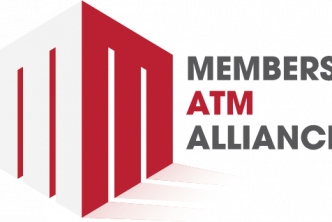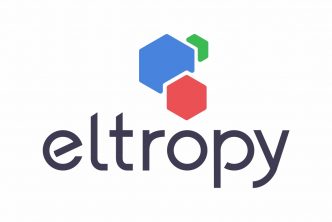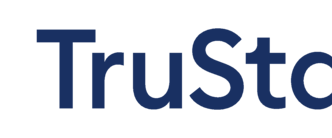By Ron Jennings, John M. Floyd & Associates, Executive Vice President
Now that the mid-term election is behind us, consumers await the outcome of promises made by both sides of the political spectrum regarding the economy, healthcare and other big picture issues that impact their quality of life and financial stability.
According to a 2018 Bankrate midterm election survey, just 38 percent of Americans report their finances have improved since 2016. The majority of those polled said they were doing about the same financially or were worse off.
Consider the following:
- Fifteen percent of homeowners borrow against home equity just to meet monthly bills, such as rent or mortgage, food and utility payments.1
- Eighty percent of U.S. consumers live paycheck to paycheck.2
- S. household debt, which declined between 2008 and 2013, has rebounded sharply to an all -time high of $13.2 trillion at the end of first quarter 2018.3
- After a mini-peak in 2015 that saw the U.S. personal savings rate increase to six percent, nearly half of consumers no longer have one month’s savings set aside for emergencies. In August 2018, the savings rate dropped to three percent, just above levels recorded on the eve of the housing bubble collapse.4
- Forty percent of U.S. adults would not be able to cover a $400 emergency expense without selling something or borrowing the money.5
In the back of their minds, many consumers know that one unforeseen obstacle — a job loss, an illness or accident, or an emergency expense could result in a temporary personal financial crisis. In these volatile situations, community banks and credit unions are positioned to outpace politicians when it comes to making a positive impact in their account holders’ lives and financial stability.
A grassroots solution to financial peace of mind
If you want to make a difference and provide greater value for your account holders, consider the following ways you can stabilize their financial situation as you finalize key initiatives going into 2019:
- Review your loan products to ensure plans to help account holders buy their first home or replace a car that provides needed transportation for their family.
- Examine your service fee structure. Consumers are not averse to paying a fee for a service they value, if it is transparent and reasonable.
- Offer a fair, fully disclosed and appropriate service for account holders who may need a place to turn when they experience occasional financial shortfalls.
Set the stage for a more stable financial outlook
When was the last time you reviewed your current overdraft strategy? If you haven’t evaluated your program and fees in a while, you are missing out on an opportunity to make a difference in your community. As we head into a new year, now is a great time to make that a priority.
Offer a fair and fully disclosed solution. While there is speculation that a divided Congress will stall any new financial legislation, a Democrat-led House may signal renewed efforts to protect consumers against predatory financial services. A fully disclosed overdraft program, that is guaranteed compliant and utilizes the industry’s best practices is the safest, most reliable way to provide account holders with a valuable service, while protecting your institution against regulatory and legal scrutiny.
Proactively educate your account holders about your program. This includes how it works and what it means to them if they have a shortfall in funds and overdraw their account. Don’t wait for them to ask about getting a limit — or worst-case scenario — experience an unexpected situation that causes them to miss an important payment or have an emergency expense denied due to a shortage of funds.
Share your fee. When account holders know the cost of a service, they can make an informed decision about whether to use it. More reasonable fees will engage more account holders in your program. High fees will drive them to outside solutions that include paying high late fees, or using a payday lender, which are more risky and costlier alternatives.
Track your overdraft activity. Comprehensive program analytics will help you determine who is using your program, how well it is working and where you can make improvements to impact your results. This information also can benefit your efforts to proactively reach out to account holders to help them with budgeting and better account management.
Communicate the benefits of your program. It is important to establish an outreach program to communicate with account holders about your overdraft service. It costs them nothing to participate if they never overdraft. But if they find themselves in a financial crunch, your overdraft fee may be the least of their concerns. Most consumers would prefer their mortgage payment honored or to be able to buy what they need at the time and pay an overdraft fee to remain in good standing, rather than have an important transaction denied.
A consistent, reliable solution wins the race
Political priorities change every election cycle. But the need for dependable, reasonably priced services that help consumers safely address a financial shortfall has no term limits. Providing a fully disclosed overdraft program and educating your account holders about how to use it wisely can stabilize their financial situation — before they need it — and make your financial institution the front runner when they elect where to conduct their banking business.
1Bankrate survey.
2CareerBuilder survey.
3American Banker, Consumer debt is at an all-time high. Should banks be worried? July 30, 2018.
4MarketWatch, Once again Americans are not saving enough. August 28, 2018.
5Federal Reserve Board of Governors Report on the Economic Well-Being of U.S. Households in 2017, May 2018.
ABOUT RON JENNINGS
Ron is responsible for managing JMFA’s business strategies, including alliances and partner relationship development in support of national sales efforts. His extensive industry knowledge and experience in performance enhancement and product development provide clients with proven strategies for optimizing their earnings potential, enhancing their overall operations and providing superior account holder service. Ron is recognized as an expert in business process optimization and change management solutions, sales and service delivery systems, as well as technology utilization and alternatives.
ABOUT JOHN M. FLOYD & ASSOCIATES (JMFA)
JMFA has been helping community banks and credit unions improve their performance and profitability for more than 38 years. Whether you’re looking for ways to recover lost revenue, uncover expense reduction opportunities or improve service delivery, JMFA has the right solutions to help you not only meet, but exceed, your goals. We are proud to be a preferred provider to many industry groups, including CUNA Strategic Services. To learn more, please contact your local representative or call 800- 809-2307.
# # #





